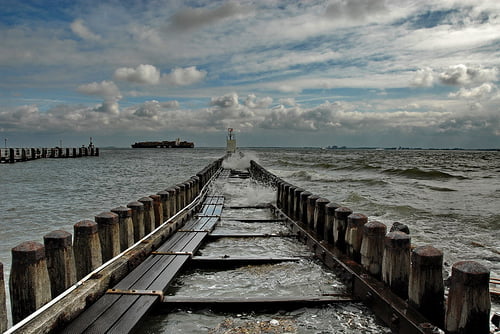

Features
On this day in 1953: North Sea floods devastate UK and Netherlands
On the night of January 31 1953, a high spring tide and a cyclonic windstorm created a storm surge that raised sea levels by 5.6 metres (18.4ft). By the morning, 2,551 people were dead; 307 in England and 19 in Scotland.
The flood is one of the most destructive natural disasters ever recorded in the UK. Along with the 326 killed, 30,000 people had to be evacuated from their homes and 24,000 properties were damaged along the east coast, where the surge reached as far as 2 miles inland in some places.
Canvey Island and the village of Jaywick in Essex were among the worst affected places in the UK, leading to the tragic deaths of 58 and 37 lives respectively. The ferry MV Princess Victoria sank in severe gales with the loss of 224 lives, along with many fishing trawlers.
But the Netherlands was hit even worse: 1,836 people killed, 9% of Dutch farmland flooded, 47,000 buildings damaged (10,000 irretrievably so) and 30,000 animals drowned. Flanders in Belgium also suffered..
The flooding led to major investments in flood defences and the Thames Barrier project was started to protect London from a similar event. The Barrier was finally opened in 1984. High water levels have risen by 20cm (8 inches) over the last century and Britain is tilting down in the south and east due to the post-glacial rebound, a legacy of the last ice age.
The Barrier was closed four times in the 1980s, 35 times in the 1990s and 75 times in the first decade of this century.
The one in every hundred-year event happened twice more in the next 60 years. Another North Sea flood struck Germany in February 1962 with the loss of 347 lives, and again in November 2007, affecting the coasts of the UK, Norway, Denmark, Germany, Belgium and the Netherlands. In a sign of improved warnings and flood defences, no lives were lost.
As the sea warms, it expands and the increasingly erratic nature of our weather means the coincidence of extreme weather with a high spring tide, which occurs twice per month, has become more likely.
The prevailing view among those responsible for our coast is to allow nature to take its course. The natural erosion of the coast creates sediment that is washed further along the coast and acts as a natural defence against the sea.
Our shallow, sinking east coast will be significantly altered over the coming decades and many coastal communities will be lost. According to the National Environment Research Council (NERC), England has some of the fastest retreating coastlines in Europe.
Speaking to the BBC on the 50th anniversary of the flood in 2003, Sean Clarke of the Met Office said, “With climate change as an additional factor, surges will happen more often, and the risk is increasing. The return period for a 1.5 metre surge in the North Sea – the interval over which you’d expect it to happen again at least once – is 120 years at the moment.
“By the 2080s, we expect a 1.5 metre storm surge could happen in the North Sea at least once every seven years. But our warning systems are a lot better than they were then, so loss of life on the scale of 1953 is pretty unlikely.”
Further reading:
Extreme rainfall is increasing in UK
Is our weather getting worse? In short, yes


 Environment10 months ago
Environment10 months agoAre Polymer Banknotes: an Eco-Friendly Trend or a Groundswell?

 Environment12 months ago
Environment12 months agoEco-Friendly Home Improvements: Top 7 Upgrades for 2025

 Features9 months ago
Features9 months agoEco-Friendly Cryptocurrencies: Sustainable Investment Choices

 Features10 months ago
Features10 months agoEco-Friendly Crypto Traders Must Find the Right Exchange




























